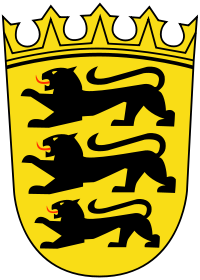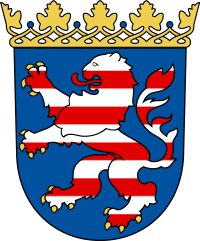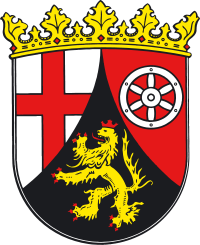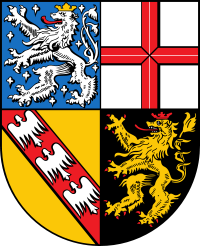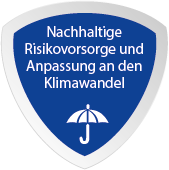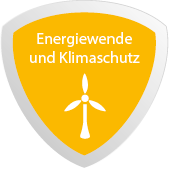Die nachfolgenden Inhalte stammen aus dem Kooperationsprogramm "INTERREG NORTH-WEST EUROPE" (genehmigt am: 18.05.2015).
Kurzbeschreibung
Development and implementation of measures for greenhouse gas emission mitigation and adaptation to climate change. Projects have to deliver both a reduction in risks and a reduction in GHG emissions.
Förderziel
To facilitate the implementation of low-carbon, energy and climate protection strategies to reduce greenhouse gas emissions.
Fördergegenstände
Demonstrations-, Modell- und Pilotvorhaben, Monitoring, Evaluierung, Qualitätsregelungen, Zertifizierungssysteme, Sachinvestitionen in Umweltschutzmaßnahmen, Vernetzung, Kooperation, Wissenstransfer
Zuwendungsempfänger
The main beneficiaries are:
- Governmental organisations (local, regional, national and international).
- Public environmental organisations, such as water authorities and nature organisations.
- Intermediate bodies, such as chambers of commerce, development agencies, cluster organisations, technology transfer offices.
- Education and knowledge institutions-, including private or semi-public research organisations.
- Civil society stakeholders (for example, third sector organisations such as NGOs and non-profit organisations).
- Enterprises.
Förderfähige Gebietskulisse
Die förderfähige Gebietskulisse in Deutschland umfasst: Saarland, Rheinland-Pfalz, Nordrhein-Westfalen, Hessen, Baden-Württemberg, Bayern (nur Oberfranken, Mittelfranken, Unterfranken, Schwaben).
Kooperationsmöglichkeiten bestehen mit folgenden Staaten: Frankreich, Luxembourg, Belgien, Niederlande, Vereinigtes Königreich, Irland, Schweiz.
Achtung: Bitte prüfen Sie im Kooperationsprogramm (KP, CP) welche Teilräume der Staaten förderfähig sind.
Beschreibung
Actions are assigned to Programme-Part "Low Carbon - To facilitate the implementation of low-carbon, energy and climate protection strategies in order to reduce GHG-emissions in North-West Europe".
Actions may include collaboration on:
- Analysing, testing, demonstrating and implementing solutions that integrate mitigation and adaptation measures. This involves technical, financial, organisational, regulatory and institutional aspects.
- Structures which deliver outcomes in adaptation (reduction in risk) and mitigation (reduction in GHG emissions), which are sustainably designed or built.
- Innovative approaches to environmental risk at a city or region level, which bring adaptation and mitigation benefits, such as Water Sensitive Urban Design (WSUD).
- Measures to reduce or compensate emissions in water systems, such as optimised water distribution and CO2 neutral maintenance of adaptation measures.
Actions lead to investments in innovative solutions for mitigation relevant adaptation and thereby reducing GHG emissions.
Hinweis: Weitere förderrelevante Informationen zur Maßnahme finden Sie im Cooperation Programme, S. 33-34.
Zielgruppe
- Households/inhabitants, including those facing problems with energy affordability and/or accessibility.
- Public organisations (local, regional, national and international).
- Social housing providers.
Zentrale Zuwendungsvoraussetzungen
Wichtige weitere Informationen zu Zuwendungsvoraussetzungen, wie z. B. die Mindestanzahl an Projektpartnern, finden Sie in den zugehörigen Unterlagen (siehe Link zu Downloads/Infos).
Auswahlverfahren
Das Auswahlverfahren umfassen jeweils eine Prüfung der formalen Eignungsvoraussetzungen, dem "eligibility check", (S. 32-33 und 41-43 des Programmhandbuchs) und, bei Feststellung der Eignung, einem Assessment der Qualität des Projektes (S. 33 und 45), welches die strategische Passung zum Programm sowie die Güte des Projektes bewertet. Hinzu kommen ggf. maßnahmenspezifische Auswahlkriterien. Die endgültige Entscheidung wird durch das Monitoring Committee getroffen.
Projektauswahlkriterien
Actions carried out to fulfill this specific objective are selected on the basis of eight key principles:
- Transnational additionality: Projects should have a clear focus on delivering joint transnational actions and must demonstrate the additionality of the transnational approach compared to regional, national, interregional or cross-border approaches.
- Innovation: Projects should meet the criteria of innovation as described in section 1. Innovation should lead to limited volume of GHG emissions in the NWE area.
- External coherence: Projects building on the results generated by other European programmes (such as the Framework Programme, Horizon 2020, COSME or LIFE) are welcome. Transnational cooperation should refer to activities under these programmes, provide an explanation of synergies and must ensure there is no duplication of existing or previous projects carried out under other EU-programmes or national funding.
- Cross-sectoral relevance: Projects should involve all key stakeholders from the field in question in the proposed project activities and ensure an integrated approach.
- Integrated approach: For the implementation of strategies, projects should take into account several topics regarding energy, for example, energy distribution, energy efficiency, energy in transport and energy use of public infrastructure/building.
- Territorial relevance: In line with the challenge of reducing territorial differences, preference is given to projects that include a mentoring/learning dimension between more developed and less developed regions. For projects aiming to improve energy accessibility/affordability, so as to maximise the benefits for citizens, preference is given to projects targeting socially deprived areas and excluded population or population at risk for exclusion.
- The involvement of local and regional public authorities is a basic prerequisite. In addition, there must be an existing or emerging low carbon strategy, energy strategy or climate protection strategy to act as a framework to guide projects’ activities. Only joint implementation of existing or emerging strategies is supported.
- Result-based approach: Projects should be geared towards the development and implementation of real solutions (technological, organisational, financial, regulatory and institutional) leading to reduced GHG emissions in NWE territories.
Laufzeit
Start der Maßnahme: 01.01.2014
Ende der Maßnahme: 31.12.2023

